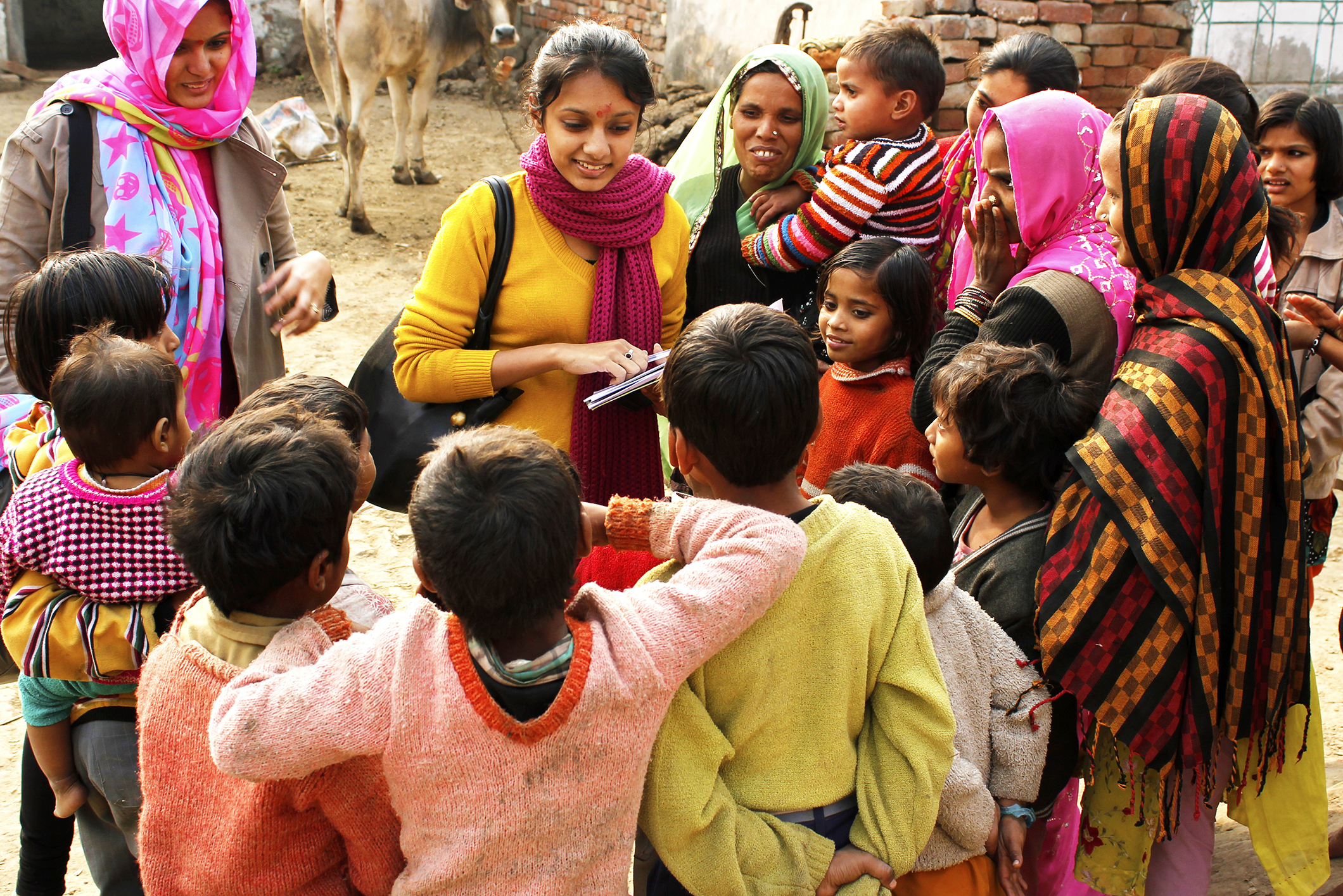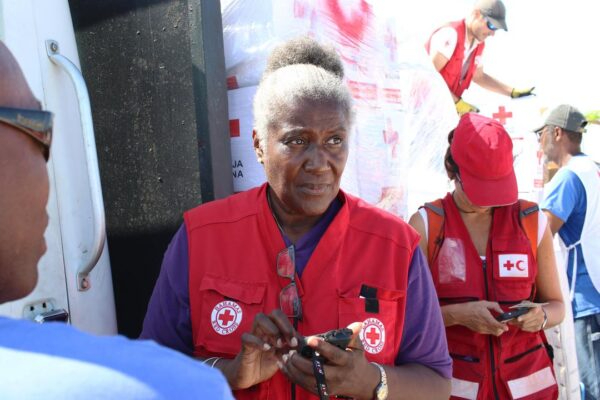SONATAnotes
As a learning and knowledge management consultant, I particularly enjoy working with NGO clients who do important work in challenging environments.

From onboarding volunteers in the midst of a crisis to strengthening civil society in fragile states or operating health clinics in remote mountain villages, NGOs face some of the most varied and difficult training challenges in any sector. And they usually have to solve these challenges with a just a fraction of a typical corporate training budget.
Here are three challenges that our NGO clients often face, and some of the lessons we’ve learned from helping organizations solve them.
Challenge #1 – Local Training Workshops are a “Black Box”

When I first started working with NGOs, after years in corporate training, I was shocked to find that organizations with 2,000 or even 8,000 staff might have a two-or-three person training department. This ratio is even more shocking given how – when you add in partner organizations, donors and clients/beneficiaries – the total audience for NGO training programs can be tens of thousands of people.
Some NGOs reconcile this disparity by taking an ad-hoc, narrowly project-specific approach to training, jetting experts around the world to facilitate workshops for 10, 25, or maybe 100 learners at a time. Alternately, they might employ a “training of trainers” pyramid where country/program/partner staff attend a workshop then go home to redeliver it to others. More often than not, this is done blindly, without a system to verify that the training is delivered consistently and effectively: training at the local level becomes a “black box” with no way of knowing if the program is having an impact.
When confronted with this lack of accountability, NGO learning managers will often point out that there is only so much they can do to monitor training delivery with limited resources and staff. They might also cite the need for local staff and partner organizations to “take ownership” of learning though, absent some kind of global structure and support, this rarely happens. Fortunately, while a proper global training strategy takes a great deal of time and strong organizational commitment to establish, there are some simple measures NGOs can take to gain visibility into the “black box”, such as:
- Ask participants to complete an online survey after each workshop. At minimum, this will give you information on how often training is being delivered and how many people are attending. If you use Survey Monkey, we recommend sending each trainer their own unique collector link, so you can keep different trainers’ results separate – you can even set the link to display the survey in the trainer’s local language)
- Ask one meaningful free response question instead of a bunch of meaningless “rate X on a scale of 1 to 5” questions. I could rant at length about the uselessness of most post-training surveys, but if you ask your audience a simple free-response question like “What insights from the training did you find most useful?”, even a quick glance at the answers will tell you whether or not the key points are coming across.
- Require trainers to fill in and upload a brief post-workshop report. While this isn’t a substitute for collecting data directly from learners, asking the trainer how they felt a workshop went and what was covered – then comparing it to learners’ feedback from the same session – can say a lot about a trainer’s performance. If there is a massive disconnect between how the trainer feels a workshop went and how well the participants seem to be grasping the subject matter, then it might be time for an intervention.
Case Study: Lightweight Tracking and Reporting
One of our early NGO clients is an international microfinance institution that provides subsidized loans to low-income populations in over 20 countries. Initially, they just wanted to find a faster way to aggregate the monthly workshop attendance reports for their customer service training program, which trainers would email to headquarters as Excel spreadsheets. However, there was reason to suspect the attendance figures were inflated, and the reports said nothing about the effectiveness of the workshops.
We suggested that the client switch from asking trainers to submit a headcount to asking trainees to complete online surveys. The results found significant differences between countries, and the fact that the results didn’t correlate to the size of the local program or language suggested that the trainers themselves were the key variable.
Based on the results, the client was able to improve its training program with feedback from the high-performing trainers, intervene with (or replace) the low-performing trainers and improve compliance rates from 65-70% to over 90%, worldwide.
Challenge #2: Long Distances, Limited Connectivity

Once, during a project for one of our NGO clients, we were informed that a team in rural Malawi could not participate in a web conference because someone had stolen the copper from the town’s Internet cable… again.
This kind of situation would be unimaginable for a multinational corporation with offices in New York, Nairobi and Shanghai, yet it reflects the daily working reality for most of our NGO clients. As a result, most of them dismiss the possibility of using online or “blended” learning for program-related training programs. Alternately, NGOs might have a story about some past, failed online training initiative that led them to give up on the format and revert to in-person workshops.
Yet, despite the challenges, there are several ways NGOs can leverage distance learning in limited-connectivity (or even zero-connectivity) environments that actually work – often by rediscovering old tricks that training professionals used before the broadband era such as:
- Distribute content on physical media such as USB flash drives or CD-ROMs. If you don’t want to duplicate thousands of CDs/flash drives, then we recommend sending a single copy of the course materials to a local training or IT manager, then asking them to copy it to individual learners’ devices.
- Use bandwidth-friendly formats, such as audio rather than video. Perhaps it’s because of my own background in radio, but I’ve always been surprised at how few training programs leverage audio. Audio is cheap to produce (you can simply record and edit a Skype interview with a subject matter expert), and most of us already listen to podcasts on our favorite topics. Even in situations where connectivity isn’t an issue, some learners prefer audio because they can listen while commuting to work or doing other things.
Case Study: Delivering Training on USB
One of our clients provides training to police and military forces on good governance, human rights and rules of law. While they had developed some e-learning modules in-house, one of the complaints they received was that police and military personnel stationed in remote areas had difficulty accessing the modules online.
We helped the client to package their existing e-learning on USB cards. While, in theory, sending the courses as loose files might have sufficed, we were able to offer a more user-friendly experience, with language selection menus and a course catalog, by using an app we devised from an open-source version of the Chrome internet browser.
The result proved popular with learners and stakeholder organizations, and within a year the client’s donors provided financing to translate the materials into several additional languages.
Challenge #3 – Addressing Global Needs with Program-Restricted Funds

While NGOs may be “non-governmental”, the most effective NGO managers have a government bureaucrat’s talent for bending rules to achieve a greater good. The following conversation (edited a bit to protect the client’s anonymity) is all too typical:
Client – “When you create the training on mental health among refugee populations, be sure to mention the war in [Country X]”
Me – “I thought the war in [Country X] was over.”
Client – “It is, but the financing was specifically for assisting refugees from the war in [Country X].”
Me – “Okay… but if that’s the case, why are we still making this training?”
Client – “Because we want to use it for the war in [Country Y].”
Though well-intentioned, donor restrictions can create barriers for NGOs developing scalable, global training capacity. Program-restricted funding can create a siloed mindset that leads to the kind of ad-hoc, inefficient, project-specific training programs we discussed earlier. Often, the fact that money earmarked to train beekeepers in Burundi on co-op management can’t be spent to train cotton growers in Kazakhstan leads each program to set up parallel, and often incompatible, training processes and platforms.
Developing a global training framework capable of accommodating program-level needs can save time and money while increasing the impact of all an NGO’s programs. However, donors usually aren’t interested in paying for “overhead”, which is how global training capacity and infrastructure are typically viewed.
So how can NGOs build global capacity using program-restricted funds, without breaking the rules?
Solutions
The best advice we can offer to clients in this situation is to:
- Define some broad guidelines and standards for training that could work for 90% of your programs 90% of the time. Interview your country- and program-level staff to get a sense of their program-related learning needs, then see if you can get everyone’s buy-in on a set of global guidelines for training development and delivery. If different programs are all developing with the same templates and delivering according to the same best practices via the same platforms, then it will be much easier to repurpose the work of one program to support another.
- Present your training framework to donors as a feature, pointing out how – if they are prepared to adjust their requirements slightly to fit the framework – it could save costs, speed up development time and deliver greater mission impact.
- If you don’t have a global training department, at least appoint a global training coordinator. Having country and program teams notify a single point of contact about their learning-related needs and plans will help your organization identify opportunities for leveraging training across programs, or at the very least avoid duplication of effort.
Case Study: Creating a Global Training Platform
One of our NGO clients had 20+ country level affiliates organized into four regions. At the time we started working with them, one region was about to spend $17,000 from their general operating budget to have an outside vendor create a new, custom-built online learning platform, while another region was planning to spend around $35,000 in program-specific funds to develop a different, custom-built online learning platform with a different vendor.
By interviewing the training leads in each region, we were able to create a set of specifications for a learning platform that could meet 90% of everyone’s needs (and helped persuade the holdouts to compromise on a few points for the greater good). We then circulated an RFP and found a capable vendor who built a unified, global learning platform for just $18,000. The organization then decided to use the money saved to add a full-time administrator to their global learning team.
After two years, the client estimated that the unified platform saved them around 30% on training development and delivery costs year over year, with better outcomes and more global staff available to support country-level training initiatives.
Conclusion
Hopefully the case studies and tips above have proven useful, and offered a sense of what your NGO could do on both a strategic and practical level to improve your training capacity. If your organization is dealing with these or any other learning and knowledge management related challenges, feel free to reach out to emil.heidkamp@sonatalearning.com with questions.

Emil Heidkamp is the founder and senior learning strategist at Sonata Learning. He works with NGOs, corporations and government agencies to implement training and knowledge management initiatives impacting thousands of learners in over 50 countries.





